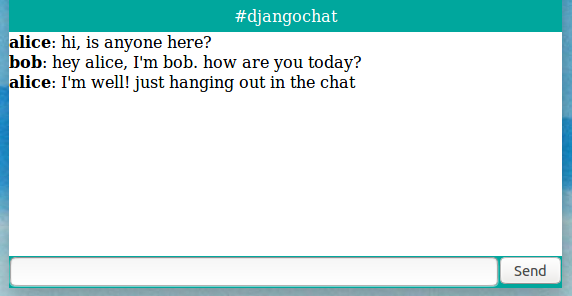subscribe via RSS
-
We've been acquired by Fastly
I’m excited to share that Fanout is now part of Fastly! Over the coming months we’ll be rolling out our realtime/push capabilities onto their global network.
See also Fastly’s announcement.
-
A cloud-native platform for push APIs
Today we are excited to announce Fanout Platform!
Fanout Platform is infrastructure software for building HTTP streaming and WebSocket APIs. It is comprised of our open source project, Pushpin, along with special add-ons for scaling. Helm charts are available for installation on Kubernetes.
Here’s a short video that shows how easy it is to upgrade from Pushpin to Fanout Platform:
Read on to learn about why we are doing this, and how it works.
-
Vercel and WebSockets
Vercel makes it easy to deploy and scale HTTP APIs using Serverless Functions. However, it’s not possible to use serverless functions to host WebSocket APIs. Does this mean you need to give up on your hopes and dreams and set up normal servers to handle your WebSockets? No way! Vercel can be combined with Fanout Cloud to handle WebSocket connections without having to literally host them.

By using Vercel and Fanout Cloud together, API logic can be kept in one place. Fanout Cloud can manage the WebSocket connections, and invoke functions whenever there is client activity. What’s great about this approach is there’s nothing extra to deploy, and it works at high scale too.
-
Rewriting Pushpin's connection manager in Rust
For over 7 years, Pushpin used Mongrel2 for managing HTTP and WebSocket client connections. Mongrel2 served us well during that time, requiring little maintenance. However, we are now in the process of replacing it with a new project, Condure. In this article we’ll discuss how and why Condure was developed.
-
Long-lived connections in a serverless world
In serverless architectures, application logic is often powered by short-lived execution environments. But what does this mean for long-lived connections? After all, many applications today depend on persistent WebSocket or SSE connections in order to exchange data in realtime.

The answer is unsurprising: either the execution limitations must be tolerated, or long-lived connections must be handled by a separate component. We’ll go over these approaches below.
-
Goodbye, XMPP
Today we removed support for XMPP in Fanout Cloud.
Fanout’s XMPP functionality simply didn’t garner the adoption we were hoping for. It was never used at scale, and was mainly relegated to chat bots that needed compatibility with Google Talk. However, as Google phased out XMPP federation, such usefulness dwindled.
-
The Edge is Nothing Without the Fog
Edge computing is hot right now. The growing maturity of IoT networks ranging from industrial to VR applications means that there’s an enormous amount of discussion around moving from the cloud to the edge (from us as well). But edge computing is only the first step.
-
High scalability with Fanout and Fastly
Fanout Cloud is for high scale data push. Fastly is for high scale data pull. Many realtime applications need to work with data that is both pushed and pulled, and thus can benefit from using both of these systems in the same application. Fanout and Fastly can even be connected together!

Using Fanout and Fastly in the same application, independently, is pretty straightforward. For example, at initialization time, past content could be retrieved from Fastly, and Fanout Cloud could provide future pushed updates. What does it mean to connect the two systems together though? Read on to find out.
-
Examining Mature APIs (Slack, Stripe, Box)
In our previous blog post, we discussed the disconnect between API pricing plans where you pay monthly for a set number of calls and regular developer use cases. We think competition will drive new pricing models that are more developer friendly – and a potential approach could be charging for calls based on their business value. Examining webhook events available via API from Stripe, Slack, and Box gives us a forward look into how this could work.
-
Dev-centric API pricing is the future
As folks who power realtime APIs, we’re always interested in broader trends in what is referred to as the “API Economy.” In the last couple of years, we (and everyone else) have seen the proliferation of APIs skyrocket. ProgrammableWeb indexes over 18,412 APIs. Even Walgreens has an API.
This has generally been a good thing for developers who want to build new technology. Instead of having to build your app from scratch, you can assemble distributed processes for everything from payments to messaging that are built and scaled by specialists, leaving you with more time to focus on your unique functionality. There are APIs and “as-a-services” (we’re one of them), for almost everything you can imagine – and this means developers are implementing more APIs in a single project than ever before.
-
Taking user experiences to the next level (with realtime)
Realtime is increasingly becoming table stakes for messaging, collaboration, or event apps. But this doesn’t mean there isn’t room for improvement – and there are all sorts of engaging ways to add realtime to apps that don’t have it yet. We’ll dive into some examples and best practices.
-
Realtime processing and edge computing: the end of the cloud?
At Fanout we’re always interested in trends involving moving and processing data in realtime. A major shift is coming, driven by the rise of connected devices and the vast amount of data they are going to collect. According to a Gartner report, 8.4 billion connected “things” will be in use in 2017, representing a 31% increase from 2016 – and every one of these IoT devices is going to need to collect, process, and transmit data in order to be effective.
-
Realtime data and continuous delivery
Software development teams are beginning to realize the benefits of continuous, test-driven delivery of new releases.
Instead of a single, milestone release (waterfall development) or multiple, internal test releases before major external ones (agile development), continuous delivery focuses on constant releasing of features to market throughout the development process.
The goal of continuous delivery is that code is always ready to deploy and features are constantly rolled out independent of ‘releases’ – and doing so properly requires realtime data.
-
Building a realtime chat app with Django and Fanout Cloud
Chat is one of the most popular uses of realtime data. In this article we’ll explain how to build a web chat app in Django, using Django EventStream and Fanout Cloud. The Django EventStream module makes it easy to push JSON events through Fanout Cloud to connected clients.

-
Reliable Server-Sent Events for Django
Today we’re pleased to introduce Django EventStream, a module that provides Server-Sent Events capability to your Django server application. It relies on Pushpin or Fanout Cloud to manage the client connections. Events can optionally be persisted to your database, for highly reliable delivery.
-
Realtime data for smart notifications
It’s becoming the new normal that messaging and collaboration apps and platforms are available across multiple devices.
Business tools like Slack and JIRA offer feature-rich mobile apps, and users increasingly consume content from social networks like Facebook on their mobile devices instead of a desktop or laptop.
This isn’t a surprise – and we’re here to share our perspective on how developers can use realtime data to provide cross-platform users with the best notification experience.
-
What is realtime?
Many software developers are familiar with realtime, but we believe that realtime concepts and user experiences are becoming increasingly important for less technical individuals to understand.
At Fanout, we power realtime APIs to instantly push data to endpoints – which can range from the actual endpoints of an API (the technical term) to external businesses or end users. We use the word in this post loosely to refer to any destination for data.
We’re here to share our experience with realtime: we’ll provide a definition and current examples, peer into the future of realtime, and try and shed some light on the eternal realtime vs. real-time vs. real time semantic debate.
 • filed under
• filed under  • filed under
• filed under